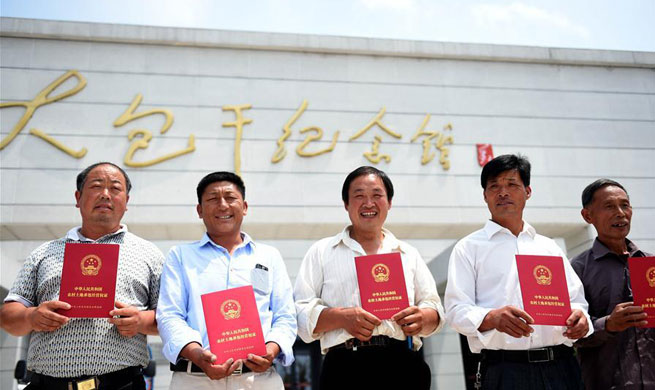WASHINGTON, May 23 (Xinhua) -- A nearly 130-million-year-old fossilized skull found in western United States provided evidence that a group of reptile-like mammals that bridge the reptile and mammal transition experienced a burst of evolution across several of today's continents.
The study published on Wednesday in the journal Nature revealed that the continental split of the ancient landmass Pangea likely occurred more recently than scientists previously thought.
"Based on the unlikely discovery of this near-complete fossil cranium, we now recognize a new, cosmopolitan group of early mammal relatives," said Adam Huttenlocker, lead author of the study and assistant professor of clinical integrative anatomical sciences at the Keck School of Medicine in University of South Carolina.
The study lent more clues to how mammals evolved and dispersed across major continents during the age of dinosaurs.
It also suggested that the divide of the ancient landmass Pangea continued for about 15 million years later than previously thought, so that mammal migration and migration of their close relatives continued during the Early Cretaceous (145 to 101 million years ago).
The early mammal precursors migrated from Asia to Europe, into North America and further onto major Southern continents, according to Luo Zhexi, senior author of the study and a paleontologist at the University of Chicago.
This finding reinforced that, even before the rise of modern mammals, ancient relatives of mammals were exploring various niches: insectivores, herbivores, carnivores, swimmers, gliders.
Huttenlocker and his collaborators at the Utah Geological Survey and the University of Chicago named the new species Cifelliodon wahkarmoosuch.
With an estimated body weight of up to 2.5 pounds (1.13 kilograms), it would seem small compared to many living mammals, but it was a giant among its Cretaceous contemporaries.
A full-grown Cifelliodon was probably about the size of a small hare or pika (small mammal with rounded ears, short limbs and a very small tail).
It had teeth similar to fruit-eating bats and could nip, shear and crush. It might have incorporated plants into its diet.
The newly named species had a relatively small brain and giant "olfactory bulbs" to process sense of smell. The skull had tiny eye sockets, so the animal probably did not have good eyesight or color vision. It possibly was nocturnal and depended on sense of smell to root out food, according to the researchers.
Huttenlocker and his colleagues placed Cifelliodon within a group called Haramiyida, an extinct branch of mammal ancestors related to true mammals. The fossil was the first of its particular subgroup (Hahnodontidae) found in North America.
The fossil discovery suggested that haramiyidans and some other vertebrate groups existed globally during the Jurassic-Cretaceous transition, meaning the corridors for migration via Pangean landmasses remained intact into the Early Cretaceous.
Most of the Jurassic and Cretaceous fossils of haramiyidans are from the Triassic and Jurassic of Europe, Greenland and Asia. Hahnodontidae was previously known only from the Cretaceous of Northern Africa.

















